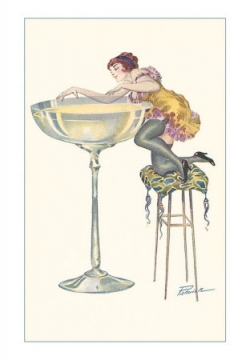 Champagne de Venoge received top scores from Wine Spectator for five newly released Champagnes that are currently available for purchase:
Champagne de Venoge received top scores from Wine Spectator for five newly released Champagnes that are currently available for purchase:
• Brut Champagne Louis XV 1996 – 93 points
• Brut Blanc de Blancs Champagne 2002 – 93 points
• Extra Brut Rosé Champagne Louis XV 2002 – 93 points
• Extra Brut Cuvee 20 ans Champagne 1983 – 92 points, and
• Extra Brut Champagne Cordon Bleu NV – 91 points
Champagne de Venoge was also selected among the “100 Best Champagnes for 2011” in Fine Champagne Magazine. Essi Avellan, Master of Wine, conducted an extensive review of Champagnes in this magazine and Champagne de Venoge got the 14th position among the Top 100 as well as the 3rd position for vintage Champagne and number 7 for rose Champagne.
Among this list, Champagne Louis XV 1996 has already received international acclaims since the release of this prestigious cuvee. After spending more than 10 years in de Venoge’s cellars in Epernay, this 1996 vintage is now on sale with a beautiful packaging and its famous «carafe» bottle.
About Champagne de Venoge
For more than 170 years, Champagne de Venoge has earned itself a privileged place in the heart of the vineyards of Champagne. Ambassador for exceptional wines of Champagne, de Venoge is first of all a family story in the constant quest for excellence. A Blue Ribbon has been the symbol of the nobility since the 16th century. In 1864, when de Venoge launched its “Cordon Bleu”, it became a mark of distinction and refinement. At the edge of the Champagne tradition in its most beautiful and noble form, de Venoge’s reputation also lies in the terroir, the rigorous selection of the best grapes in Champagne and the perpetuation of a unique style. The fine vinosity associated to the incomparable freshness brings to de Venoge’s Champagnes elegance and harmony – All this for the greatest pleasure of Champagne lovers!
Liz Palmer
@champagnehouses


 Moet & Chandon is returning as the official Champagne of the 69th Annual Golden Globe® Awards, which is produced by Dick Clark Productions and in association with the Hollywood Foreign Press Association (HFPA). In a toast to its 21st year with the iconic awards ceremony, Moet & Chandon will introduce their award-winning 2002 Grand Vintage Champagne with a celebratory toast at this year’s Golden Globe Awards nominations announcement which will be lead by HFPA president, Dr. Aida Takla-O’Reilly and Ludovic du Plessis, vice president of Moet & Chandon USA.
Moet & Chandon is returning as the official Champagne of the 69th Annual Golden Globe® Awards, which is produced by Dick Clark Productions and in association with the Hollywood Foreign Press Association (HFPA). In a toast to its 21st year with the iconic awards ceremony, Moet & Chandon will introduce their award-winning 2002 Grand Vintage Champagne with a celebratory toast at this year’s Golden Globe Awards nominations announcement which will be lead by HFPA president, Dr. Aida Takla-O’Reilly and Ludovic du Plessis, vice president of Moet & Chandon USA.


